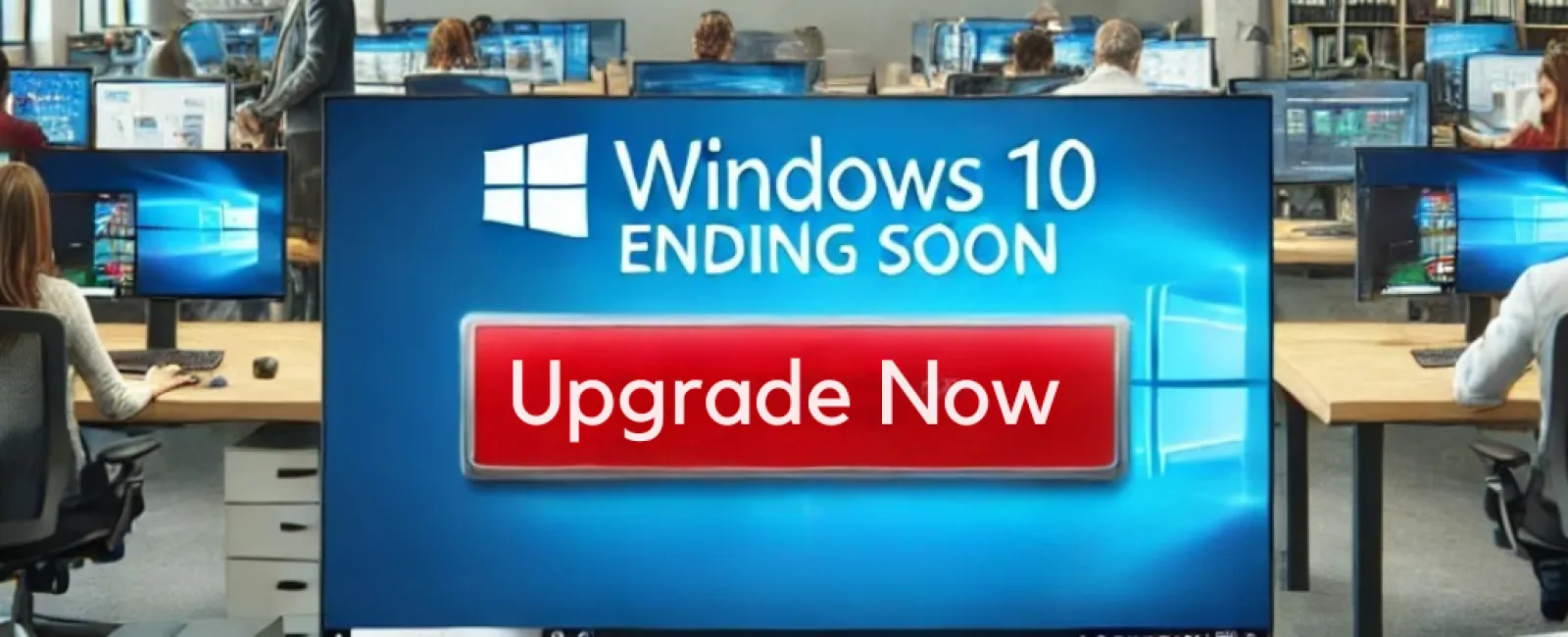April 14, 2025
Mark your calendars: October 14, 2025 is the official end of life for Windows 10. After this date, Microsoft will stop providing security updates, bug fixes, and technical support for Windows 10. But what implications does this have for your business applications and productivity tools?
If you continue using Windows 10 after the cutoff, it's not just your operating system at risk—your essential business applications could be impacted as well. Here's what you need to understand.
No More Security Updates = Major Vulnerabilities
When Windows 10 support ends, security patches will no longer be released. Any vulnerabilities found after October 14, 2025, will remain unpatched, exposing your applications to cyber threats.
What This Means For Your Applications:
- Increased Risk of Data Breaches: Without security updates, your applications become more vulnerable to hacking, ransomware, and other cyberattacks.
- Compliance Challenges: In regulated industries like healthcare or finance, running unsupported software can lead to violations and potential fines.
- Disrupted Productivity: Cyberattacks can halt business operations, causing significant downtime.
No More Feature Updates = Compatibility Issues Becoming Inevitable
As software vendors update their products, support for Windows 10 will phase out, causing compatibility problems for your applications such as:
- Frequent Crashes and Glitches: Applications may become unstable, crash often, or fail to open.
- Missing Features: New functionalities available on supported systems like Windows 11 won't be accessible.
- Security Gaps: Application updates often include security fixes; without OS support, these won't function properly, increasing cyber risk.
No More Technical Support
Support from Microsoft and third-party software vendors will end, leading to:
- No Technical Support: Vendors will stop assisting with products running on Windows 10.
- Integration Problems: New tools will be designed for Windows 11 and newer, reducing compatibility and productivity.
- Hardware Limitations: New devices may not have drivers compatible with Windows 10, restricting upgrades or expansions.
Performance And Productivity Will Suffer
Older systems struggle to meet modern software demands, resulting in:
- Slower Performance: Applications may lag, impacting employee efficiency.
- More Downtime: Increased crashes cause costly interruptions.
- Higher Maintenance Costs: Supporting legacy systems requires more IT resources, raising expenses.
What Should You Do?
To keep your applications running smoothly after Windows 10 support ends, consider these steps:
- Back Up Your Data - Protect against data loss.
- Decide To Upgrade To Windows 11 Or Replace Your Computer
- Check Compatibility: Use Microsoft's PC Health Check tool to verify if your devices support Windows 11.
- Plan For Upgrades: Budget for new hardware if current devices are incompatible.
- Partner With A Trusted IT Provider - RECOMMENDED
- Get expert advice on the best upgrade strategy for your business.
- Ensure a smooth transition with minimal disruption.
- Implement security measures to safeguard your data during the upgrade process.
Don't Wait Until It's
Too Late
The end of Windows 10 support is closer than you
think. Waiting until the last minute could leave your business vulnerable to
cyberthreats, productivity bottlenecks and compliance issues.
Start
with a FREE 15-Minute Discovery Call. Our experts will evaluate your current
setup, identify application dependencies and help you create a seamless
transition plan to ensure your business stays secure and productive.
Click
here to schedule your FREE 15-Minute Discovery Call today!
Don't leave your applications to chance. Take action
now to protect your business from the risks of outdated technology.





